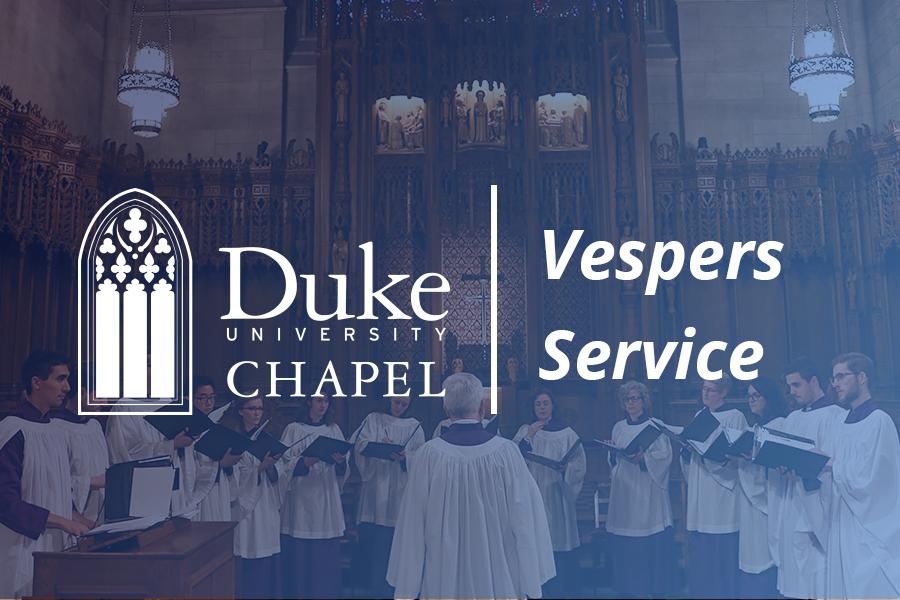Thursday, April 2, 2020

While Duke Chapel is closed for live services, we are re-broadcasting selected services from our archives. Today we are repeating Choral Vespers originally broadcast on April 11th, 2019.
The service opens with Richard Farrant’s anthem Call to remembrance, O Lord. Farrant was one of the Gentlemen of the Chapel Royal in the 1550s and sang there during the reign of Mary Tudor, taking up the post of Master of the Choristers at St George’s Chapel in 1564. In 1569 he became Master of the Choristers of the Chapel Royal.
Sadly, few of his compositions have survived: the best-known is probably Call to remembrance, O Lord. Though quite brief, the anthem shows great attention and sensitivity in the setting of the words, from the restrained trumpet-like calls of the opening, to the changes of style with each set of new words. These details reveal the hand of a skillful composer and musician.
William Byrd was also a member of the Chapel Royal, and composed music for both the Latin and the English rites. The Nunc dimittis is a canticle sung at Vespers, and though Byrd sets an English text, he maintains a connection with older traditions by using the ancient plainsong melody in unison alternating with the semi-improvised style called fauxbourdon.
Tomás Luis de Victoria is regarded as one of the most important composers of Spanish Counter-Reformation sacred music. He was an accomplished singer, organist and composer whose musical education began as a chorister at Ávila cathedral. King Philip II of Spain gave him a scholarship to study in Rome, where he is thought to have studied with Palestrina before returning to his native Spain as chaplain to the King’s sister, the Dowager Empress Maria.
Victoria composed exclusively sacred music. Many commentators hear in his music a mystical intensity and direct emotional appeal, qualities considered by some to be lacking in the arguably more rhythmically and harmonically placid music of Palestrina. Vere languores nostros is a text for Good Friday: Victoria’s setting is a perfect example of the fluid lines and counterpoint of the Italian renaissance style, imbued with a passion more often found in music by its Iberian neighbours.
O bone Jesu by 20th century British composer Philip Radcliffe, who was a music fellow at King’s College, Cambridge. When he sat for a scholarship examination he said, "I attended evensong in the Chapel of my future College and can still recall the impact made upon me by the quiet, other-world sound of the choir singing Remember, O thou man." O bone Jesu is a simple, four-part piece which features a canon between two of the voices: a perfect example where contrapuntal skill does not dominate the ethereal effect of the piece.
Music during this service:
- Call to remembrance by Richard Farrant
- Blessed Jesus, at Thy Word (LEIBSTER JESU)
- Psalms 140 & 142 (Plainsong)
- Nunc Dimittis by Willian Byrd
- Vere languores by Tomas Luis de Victoria
- Come, Holy Ghost, Our Souls Inspire (VENI CREATOR)
- O bone Jesu by Philip Radcliffe